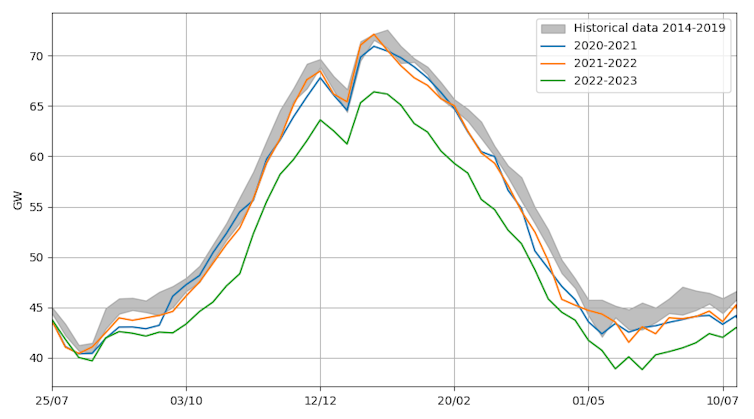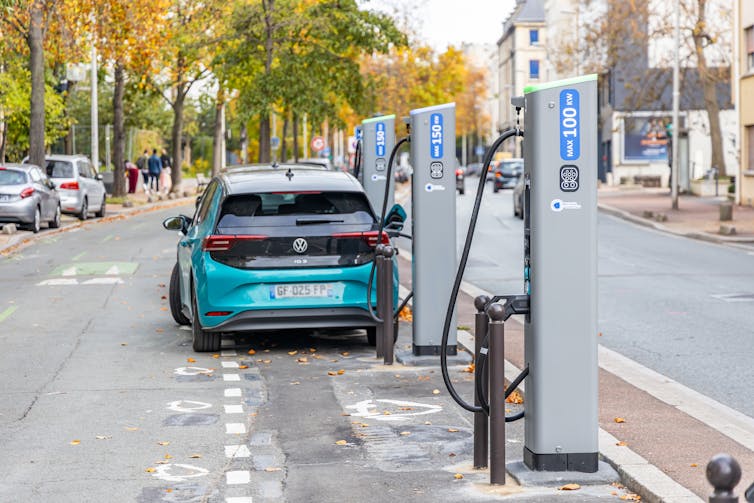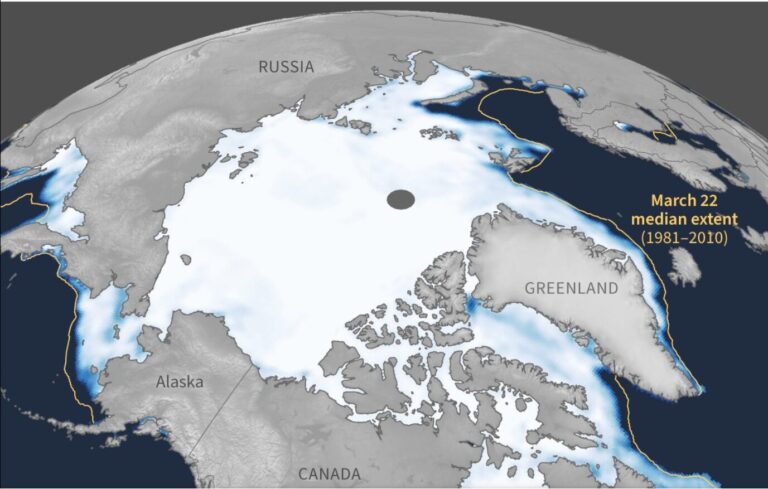
Ariane Millot, Imperial College London et Steve Pye, UCL
According to the UN’s Intergovernmental Panel on Climate Change, measures that help people use less energy at home while traveling or at work could significantly cut greenhouse gas emissions. When there is less demand for energy, less low-carbon electricity needs to be generated to replace fossil fuels and reach net zero.
Making do with less energy was important last winter when Russia’s war in Ukraine caused energy prices to soar and restricted gas supplies. France implemented a “sobriety plan” to lower total energy consumption by 10% within two years to avoid shortages.
France’s experience is instructive for other countries considering how to manage high energy prices and reach net zero, with another winter energy crunch possibly looming. It showed that sufficiency measures can slash energy consumption and quickly cut emissions driving climate change. However, more profound changes to how society is organized are necessary to maximize the potential contribution of these measures to decarbonization.
A 15-point ‘energy sobriety’ plan
Energy sufficiency measures aim to limit how much energy is consumed to meet public needs. They can involve people lowering the thermostat on their heating or switching to public transport instead of driving.
France’s plan de sobriété énergétique in October 2022 contained 15 measures, including a maximum temperature of 19°C in public buildings, support for teleworking and car-sharing, and dimming or turning off public lights at certain hours. The plan also included subsidies for installing more efficient heating systems, like heat pumps.
To reduce the risk of power cuts, the plan sent an alert via an app called Ecowatt three days before energy supply was forecast to fall below demand. This worked by asking households to lower their electricity consumption by switching off appliances or avoiding using them during peak times like the early evening.
Combined with people using less energy due to higher prices, the sobriety plan cut electricity consumption in December by almost 10% compared with previous years. This varied by sector, ranging from 12% in industry to 7% in homes, cafés, shops, and restaurants. Meanwhile, natural gas consumption was 17% lower than the previous winter when adjusted for temperature differences.

Given fossil fuel use must fall to tackle climate change, what has France’s experiment revealed about the necessary effort to decarbonize?
Lesson 1: sufficiency measures can cut emissions quickly
During winter 2022, France’s emissions fell by around 8% compared with pre-pandemic levels. In a survey of 12,000 people by the French transmission system operator, a majority indicated that they might be willing to continue actions taken during winter 2022-2023.
This is encouraging. The sufficiency measures not only lowered emissions within a few months; the lack of any significant backlash also suggested that people may be receptive to similar measures to rein in fossil fuel use.
Lesson 2: economics a bigger motivator than the environment
In December 2022, gas prices increased by almost 130% compared with 2021, while electricity prices in 2022 more than doubled.
Lower-income households are less able to reduce their typically low levels of energy use during shortages and are less capable of investing in more energy-efficient systems. Higher-income households can cut their consumption more easily, but their usage is less sensitive to increases in energy costs.
The survey revealed that the cheapest heating systems were the most sought-after. However, many people were reluctant or unable to switch to such energy-efficient alternatives without a guarantee of the same level of service and the cost of installation being subsidized. The French sobriety plan did include financial support for households to replace oil heating systems. The subsidy was offered based on income and could reach up to €15,500 (£13,350).
While higher prices can induce minor cuts to energy demand, more extensive changes that could permanently lower emissions will need further incentives or regulation.

Lesson 3: research can take time to be endorsed by policymakers
Negawatt, an association that models France’s energy transition scenarios, first introduced the concept of “sobriety” in a public debate ten years ago. This led to France adopting a goal of reducing total energy consumption by 50% by 2050 compared with 2012. Very few policies have been enacted since to support this target.
In the last few years, total energy consumption fell mainly due to COVID-19 restrictions. In that regard, the energy sobriety plan marks a shift in the government’s attitude, though its embracing of sufficiency measures was triggered by concerns around energy security and costs – not carbon neutrality.
France must go beyond the current plan to fully capture the climate benefits of energy-sufficiency measures. Lowering energy use in line with the national target requires integrating energy sufficiency into a broader transformation of society.
Ariane Millot, Research Associate in Energy Systems Modelling, Imperial College London et Steve Pye, Associate Professor in Energy Systems, UCL
This article is republished from The Conversation under a Creative Commons license. Read the original article.




Comments are closed.